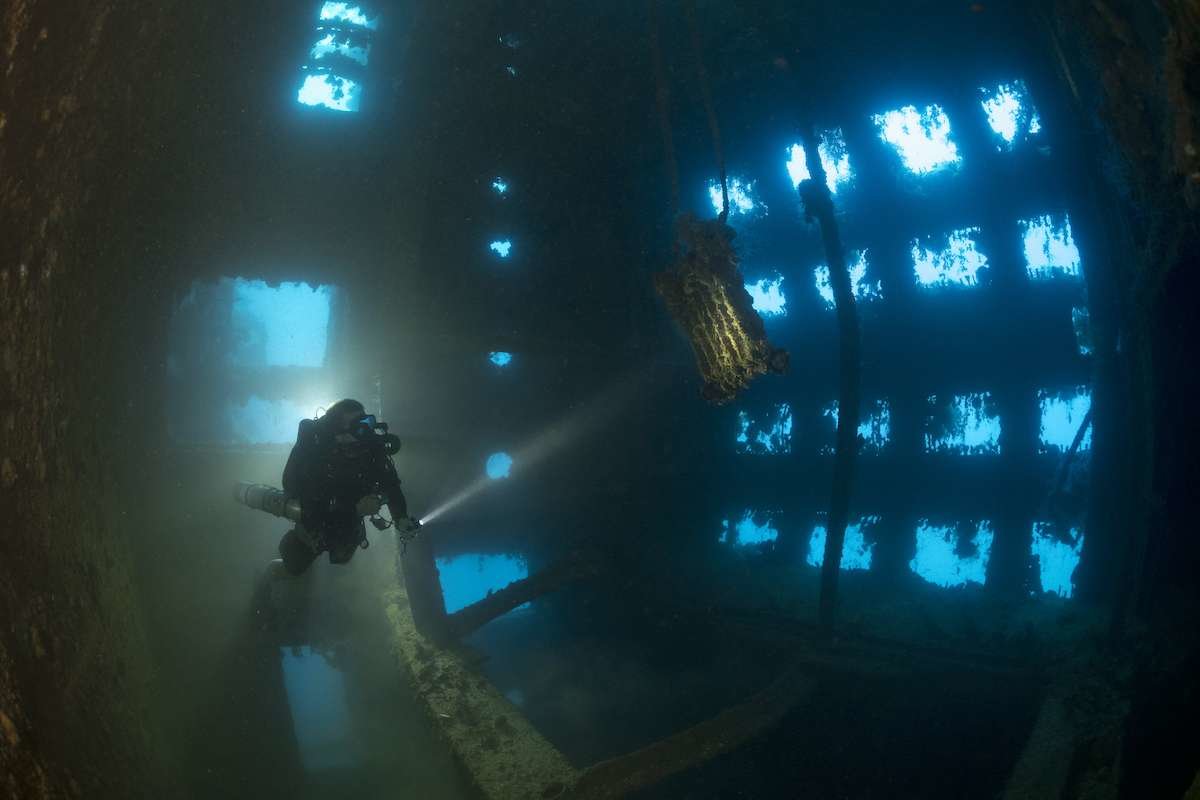
Truk Lagoon, also known as Chuuk Lagoon, is a tropical paradise with a haunting past. Located in the central Pacific, this lagoon is famous for its stunning underwater scenery and rich history. During World War II, it served as a significant Japanese naval base. Today, it’s a top destination for divers and history buffs alike. Why is Truk Lagoon so special? It's home to over 60 shipwrecks and countless aircraft wrecks, creating an underwater museum teeming with marine life. Divers can explore sunken battleships, planes, and tanks, all covered in coral. This unique blend of history and nature makes Truk Lagoon a must-visit spot for anyone interested in underwater adventures.
Key Takeaways:
- Truk Lagoon, also known as Chuuk Lagoon, is a historically significant and ecologically diverse destination, offering over 50 well-preserved shipwrecks for diving enthusiasts to explore.
- The lagoon's rich history, vibrant marine life, and cultural significance make it a must-visit location, with efforts underway to preserve its natural and historical treasures for future generations.
The History of Truk Lagoon
Truk Lagoon, also known as Chuuk Lagoon, is a fascinating location with a rich history. Located in the central Pacific, it played a significant role during World War II. Here are some intriguing facts about its historical significance.
- Truk Lagoon was a major Japanese naval base during World War II.
- The lagoon was the site of Operation Hailstone, a massive U.S. Navy air and surface attack in February 1944.
- Over 60 Japanese ships and 275 aircraft were destroyed during Operation Hailstone.
- The attack on Truk Lagoon is often referred to as the "Japanese Pearl Harbor."
- Truk Lagoon was considered one of the most formidable strongholds in the Pacific.
The Geography of Truk Lagoon
The geographical features of Truk Lagoon make it a unique and captivating destination. Its natural beauty and strategic location have drawn attention for centuries.
- Truk Lagoon is part of the Federated States of Micronesia.
- The lagoon covers an area of approximately 2,130 square kilometers.
- It is surrounded by a protective reef, making it a natural harbor.
- The lagoon contains 11 major islands and 46 smaller ones.
- The water depth in the lagoon ranges from shallow reefs to deep channels over 100 meters.
Marine Life in Truk Lagoon
The underwater world of Truk Lagoon is teeming with diverse marine life. Its vibrant ecosystem attracts divers and marine biologists from around the globe.
- Truk Lagoon is home to over 1,000 species of fish.
- The coral reefs in the lagoon are among the most diverse in the world.
- Many of the shipwrecks have become artificial reefs, supporting marine life.
- Divers can encounter sharks, rays, and turtles in the lagoon.
- The lagoon's clear waters offer excellent visibility for underwater exploration.
Diving in Truk Lagoon
Diving in Truk Lagoon is a bucket-list experience for many scuba enthusiasts. The combination of historical shipwrecks and abundant marine life makes it a premier diving destination.
- Truk Lagoon is often referred to as the "Wreck Diving Capital of the World."
- There are over 50 shipwrecks to explore in the lagoon.
- Many of the wrecks are well-preserved, with artifacts still visible.
- The Fujikawa Maru is one of the most famous wrecks, a Japanese aircraft transport ship.
- Divers can also explore sunken planes, including the Betty Bomber and the Emily Flying Boat.
The Cultural Significance of Truk Lagoon
Truk Lagoon holds cultural importance for the local Chuukese people. Its history and natural resources have shaped their way of life for generations.
- The Chuukese people have lived in the lagoon for over 2,000 years.
- Traditional navigation techniques were developed by the Chuukese to travel between islands.
- The lagoon's resources have provided sustenance and materials for the Chuukese.
- Many local legends and stories are tied to the lagoon's islands and waters.
- The Chuukese continue to practice traditional fishing and farming methods.
Preservation Efforts in Truk Lagoon
Preserving the natural and historical treasures of Truk Lagoon is crucial. Various efforts are underway to protect this unique environment for future generations.
- The Federated States of Micronesia has established marine protected areas in the lagoon.
- Efforts are being made to document and preserve the historical shipwrecks.
- Local and international organizations are working to combat pollution in the lagoon.
- Sustainable tourism practices are encouraged to minimize environmental impact.
- Education programs aim to raise awareness about the importance of conservation.
Interesting Tidbits about Truk Lagoon
Beyond its historical and ecological significance, Truk Lagoon has some lesser-known but equally fascinating aspects.
- The lagoon was featured in the 1969 documentary "Lagoon of Lost Ships."
- Jacques Cousteau, the famous oceanographer, explored Truk Lagoon in the 1960s.
- The lagoon's shipwrecks are considered underwater museums.
- Truk Lagoon has been a UNESCO World Heritage Site nominee.
- The lagoon's unique blend of history, culture, and natural beauty continues to captivate visitors.
The Final Dive
Truk Lagoon, with its rich history and underwater wonders, offers a unique glimpse into the past. From the sunken ships that tell tales of World War II to the vibrant marine life that now calls these wrecks home, this place is a diver's dream. The crystal-clear waters and diverse ecosystems make it a hotspot for both historians and nature enthusiasts. Whether you're exploring the ghostly remains of warships or marveling at the colorful coral reefs, Truk Lagoon never disappoints. It's a reminder of how nature can reclaim and transform even the most tragic sites into something beautiful. So, if you're ever in the Pacific, don't miss the chance to dive into this incredible underwater museum. It's an experience that stays with you long after you surface.
Frequently Asked Questions
Was this page helpful?
Our commitment to delivering trustworthy and engaging content is at the heart of what we do. Each fact on our site is contributed by real users like you, bringing a wealth of diverse insights and information. To ensure the highest standards of accuracy and reliability, our dedicated editors meticulously review each submission. This process guarantees that the facts we share are not only fascinating but also credible. Trust in our commitment to quality and authenticity as you explore and learn with us.


